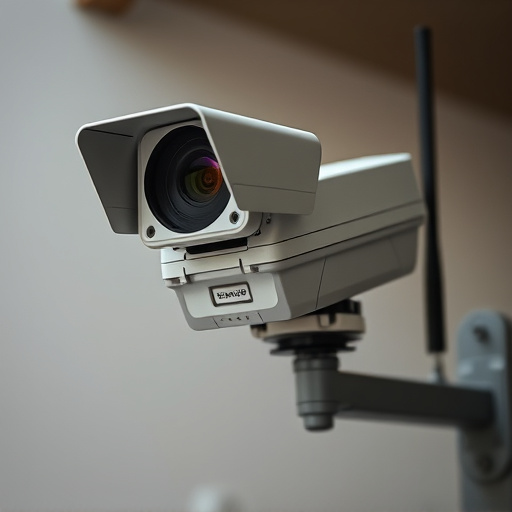Dummy cameras, with varying battery options, offer enhanced security. Passive Infrared (PIR) models excel in energy efficiency. Recent advancements bridge the gap between active and passive cameras' battery life. Consumers should compare battery performance, optimize power management settings, and consider specifications to maximize runtime without compromising functionality, focusing on Dummy Cameras Battery Life Comparison.
In today’s digital era, realistic security camera shells are not just aesthetic add-ons; they play a crucial role in enhancing surveillance effectiveness. This article delves into the intricacies of designing practical and durable security camera enclosures, focusing on a key aspect: Dummy Cameras Battery Life Comparison. We explore different types of dummy cameras, analyze factors influencing battery longevity, and provide best practices to optimize performance, ensuring your security system remains vigilant and efficient.
- Understanding Realistic Security Camera Shell Design Needs
- Types of Dummy Cameras and Their Battery Life Comparison
- Factors Affecting Battery Life in Security Cameras
- Best Practices for Optimizing Dummy Camera Battery Life
Understanding Realistic Security Camera Shell Design Needs
In the realm of security camera design, a realistic shell is more than just aesthetics; it serves as a functional element crucial for effective deployment. These shells, often referred to as dummy cameras, mimic genuine security equipment, fostering a sense of vigilance and deterring potential intruders. A key consideration in their design is battery life comparison—the ability to operate discreetly over extended periods without requiring frequent replacements or recharging.
This aspect is vital for strategic placement, especially in hard-to-reach or remote areas. Advanced shell designs now incorporate innovative power solutions, such as solar panels or long-lasting batteries, enabling dummy cameras to remain operational even in challenging environments. By addressing battery life and other practical needs, security professionals can ensure these realistic camera shells not only enhance visual surveillance but also provide a cost-effective and reliable solution for various security applications.
Types of Dummy Cameras and Their Battery Life Comparison
In the realm of security, Dummy Cameras have emerged as a game-changer for enhancing surveillance and deterring potential intruders. When it comes to battery life, there are various types available in the market, each offering unique advantages. Passive Infrared (PIR) models, for instance, are energy-efficient due to their reliance on body heat detection, leading to prolonged battery lifespan compared to Wi-Fi or Bluetooth variants that constantly transmit data.
Active models with integrated Wi-Fi or cellular connectivity provide real-time monitoring but often have shorter battery lives as they require constant power for transmission. However, newer technologies like low-power wide-area (LPWA) networks and advanced power management systems are extending the operational duration of these devices, bridging the gap between passive and active types in terms of Dummy Cameras Battery Life Comparison.
Factors Affecting Battery Life in Security Cameras
The battery life of security cameras is a critical factor for homeowners and businesses alike, especially when considering the ongoing costs and convenience. Several elements significantly affect how long a camera’s battery lasts before requiring a recharge. One of the primary factors is the camera’s power consumption, which can vary based on its features and settings. Advanced cameras with higher resolution, motion detection, and 24/7 recording tend to drain batteries faster. Additionally, outdoor cameras facing direct sunlight or those in colder climates may experience reduced battery life due to increased heating or cooling demands.
Another critical aspect is the quality and type of the dummy camera’s battery. Using high-capacity, lithium-ion batteries can significantly extend operational time between charges. Moreover, a dummy camera’s battery life can be influenced by its charging technology. Fast-charging capabilities can be a significant advantage, allowing users to top up their cameras’ power quickly, ensuring minimal downtime. Lastly, regular software updates and efficient power management settings can play a surprising role in optimizing battery performance, making them an essential consideration in any security camera system.
Best Practices for Optimizing Dummy Camera Battery Life
To optimize dummy camera battery life, start by selecting a model with an efficient power management system. Unlike real cameras, dummy cameras don’t require constant connectivity or image capture, so setting them to enter a low-power mode during periods of inactivity can significantly extend battery life. Regularly compare different models’ battery life through reviews and tests, focusing on factors like standby time and frequency of automatic activation.
Additionally, adjusting settings for motion detection sensitivity and configuring the camera’s update interval can reduce power consumption. Setting the motion sensor to detect only significant movements rather than subtle ones cuts down on false alarms that trigger the camera, thereby conserving battery power. Similarly, reducing the update frequency of the camera’s software ensures less frequent data transmission, leading to longer battery life.
Realistic security camera shell design, coupled with strategic dummy cameras deployment, can significantly enhance home and business security without breaking the bank. By understanding the factors affecting battery life in these devices and adopting best practices for optimization, you can ensure your security system remains effective and efficient for extended periods. When choosing between various types of dummy cameras, a thorough comparison of their battery life becomes crucial, allowing you to select the most cost-effective solution that meets your specific needs. Remember, optimal battery performance is key to maintaining a robust and reliable security setup.
